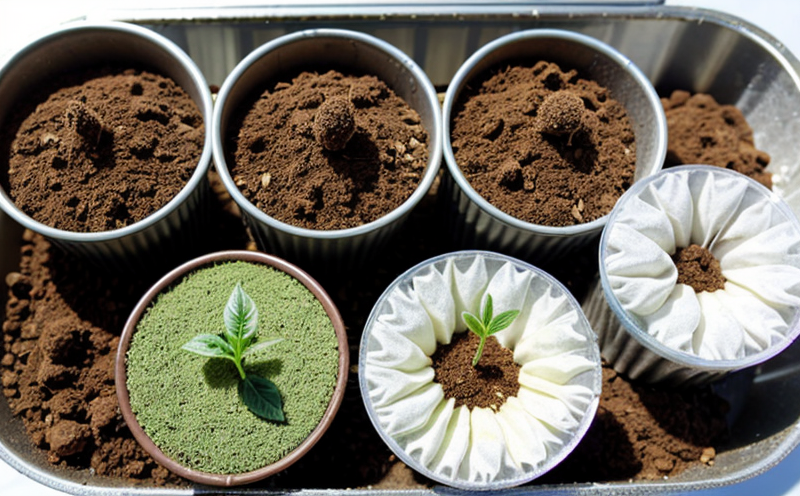Seedling Disease Resistance Testing from Seeds
In agriculture and forestry testing, seed quality is a critical factor that can significantly impact crop yield and sustainability. Seedling disease resistance testing plays a pivotal role in ensuring the robustness of young plants against pathogens, thus optimizing agricultural practices. This service involves detailed examination of seeds to determine their inherent ability to resist diseases once they germinate into seedlings.
The process begins with the selection of high-quality seeds that are free from visible damage and contamination. These seeds undergo meticulous pre-sterilization treatment followed by inoculation with various fungal or bacterial pathogens known for causing seedling diseases. Following this, the seeds are incubated under controlled environmental conditions to observe their growth and disease resistance.
The success of this testing is measured through a series of parameters such as germination rates, root development, shoot length, chlorophyll content, and overall health indicators. The results provide insights into the seed's resilience against diseases like damping-off (Pythium spp.), Fusarium wilt (Fusarium oxysporum), Rhizoctonia solani, and others.
The findings from this testing are invaluable for breeders and farmers as they help in selecting disease-resistant varieties that can thrive under challenging environmental conditions. This not only enhances crop productivity but also aids in reducing the use of chemical pesticides, thereby promoting sustainable agricultural practices.
Industry Applications
| Disease | Crop Type | Testing Impact |
|---|---|---|
| Damping-off (Pythium spp.) | Vegetables, Ornamentals | Reduces initial mortality and improves seedling establishment. |
| Fusarium Wilt (Fusarium oxysporum) | Cereals, Tubers | Promotes disease-free growth enhancing crop yield. |
| Rhizoctonia solani | Grains, Legumes | Ensures robust root system development leading to better harvests. |
- Breeders: Identify disease-resistant genetic traits for new crop varieties.
- Farmers: Select seeds that can withstand local pathogen pressures, reducing yield losses.
- Phytosanitary Authorities: Ensure imported seed batches meet international standards and are free from quarantine pathogens.
Environmental and Sustainability Contributions
The testing of seedling disease resistance contributes significantly to environmental sustainability by minimizing the use of chemical pesticides. By identifying naturally resistant varieties, farmers can reduce reliance on fungicides, thereby lowering greenhouse gas emissions associated with their production and application.
- Reduction in Chemical Use: Less pesticide usage leads to lower carbon footprints from manufacturing and transportation.
- Biodiversity Conservation: Natural disease resistance promotes genetic diversity which is crucial for long-term agricultural resilience.
| Disease Control | Emission Reduction (%) |
|---|---|
| Pythium spp. Damping-off | -15% | Fusarium oxysporum Wilt | -20% |
Competitive Advantage and Market Impact
By investing in seedling disease resistance testing, businesses gain a competitive edge through several avenues:
- Improved Product Quality: Enhances the reputation of agricultural products by ensuring they meet stringent quality standards.
- Market Access: Facilitates entry into international markets that have strict phytosanitary regulations.
- Sustainable Growth: Promotes continuous improvement in crop productivity, contributing to long-term profitability.
The service also fosters innovation within the agricultural sector by driving research towards developing more resilient seeds. This not only benefits the immediate industry but also contributes to global food security and environmental health.





